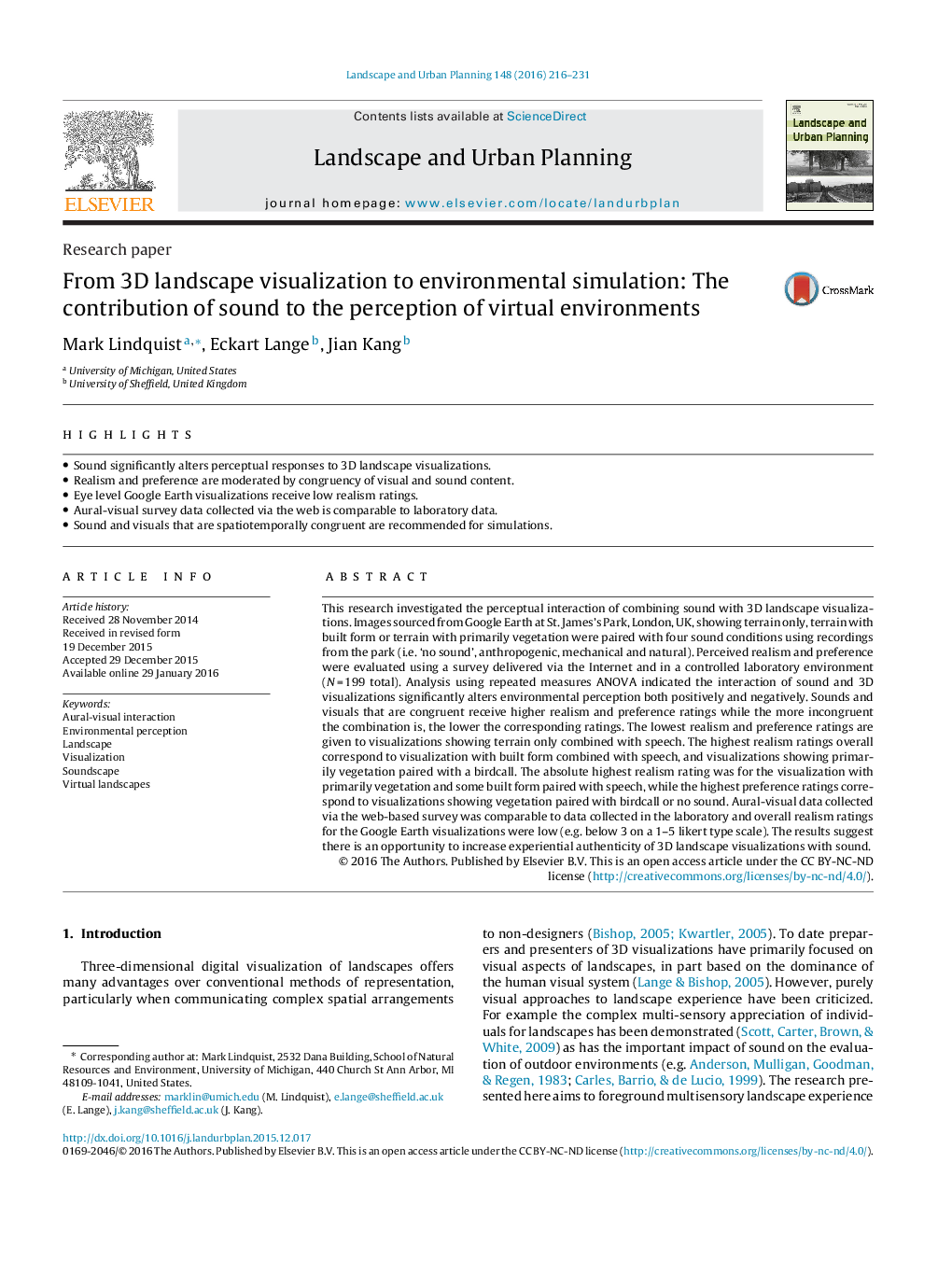| Article ID | Journal | Published Year | Pages | File Type |
|---|---|---|---|---|
| 7460795 | Landscape and Urban Planning | 2016 | 16 Pages |
Abstract
This research investigated the perceptual interaction of combining sound with 3D landscape visualizations. Images sourced from Google Earth at St. James's Park, London, UK, showing terrain only, terrain with built form or terrain with primarily vegetation were paired with four sound conditions using recordings from the park (i.e. 'no sound', anthropogenic, mechanical and natural). Perceived realism and preference were evaluated using a survey delivered via the Internet and in a controlled laboratory environment (NÂ =Â 199 total). Analysis using repeated measures ANOVA indicated the interaction of sound and 3D visualizations significantly alters environmental perception both positively and negatively. Sounds and visuals that are congruent receive higher realism and preference ratings while the more incongruent the combination is, the lower the corresponding ratings. The lowest realism and preference ratings are given to visualizations showing terrain only combined with speech. The highest realism ratings overall correspond to visualization with built form combined with speech, and visualizations showing primarily vegetation paired with a birdcall. The absolute highest realism rating was for the visualization with primarily vegetation and some built form paired with speech, while the highest preference ratings correspond to visualizations showing vegetation paired with birdcall or no sound. Aural-visual data collected via the web-based survey was comparable to data collected in the laboratory and overall realism ratings for the Google Earth visualizations were low (e.g. below 3 on a 1-5 likert type scale). The results suggest there is an opportunity to increase experiential authenticity of 3D landscape visualizations with sound.
Related Topics
Life Sciences
Agricultural and Biological Sciences
Ecology, Evolution, Behavior and Systematics
Authors
Mark Lindquist, Eckart Lange, Jian Kang,
